Eleveight launches new wing lineup for 2025/26
New wing, board and brand new foil releases from Eleveight enter into their 2025 range...
READ MORE
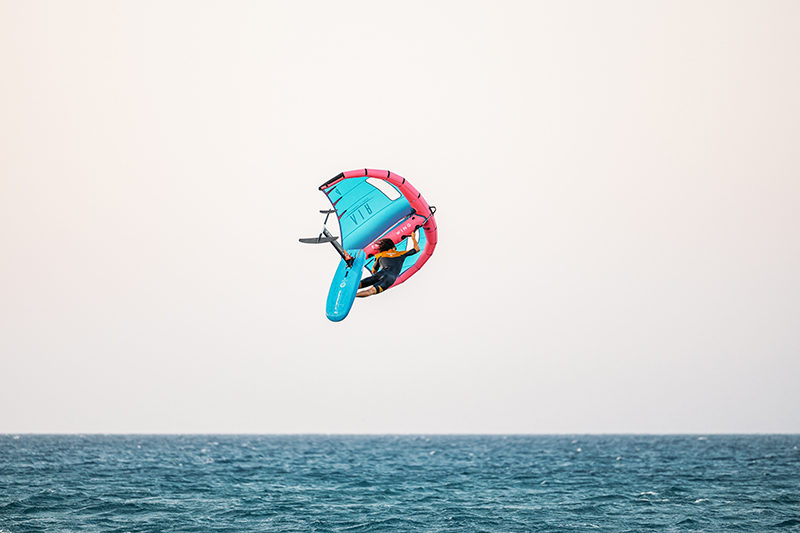
FreeWing – the ongoing and successful collaborative joint partnership between brands Starboard and Airush – just released the new AIR V3. With plenty of tweaks and upgrades to their flagship wing, it was time to speak to FreeWing Product Designer John Lewis.
Hey John, so firstly please tell us what changes we’re going to find in this model…
Hey team! So this model is quite the overhaul from the Air V2, making numerous steps in many areas, working really hard to ensure this wing is the perfect all-round performance wing. One of the most notable changes is the introduction of our brand new modular handle system. This will allow for changing between our new firm flex and prepreg carbon handles, giving the user complete customization as well as the possible introduction of boom systems and other exciting handle options down the line. Other more noticeable changes include the significantly tighter canopy to improve ease of use in maneuvers and responsiveness of the wing, as well as the re-engineered leading edge diameter, which reduces drag and improves the speed of the wing.
We’ve really tried to think of everything with this wing, working less noticeable features such as the improved seam construction allowing for significantly higher pressure in the wing and minute details such as the new window design. However, if I was to list all of them it would make for quite a long read.
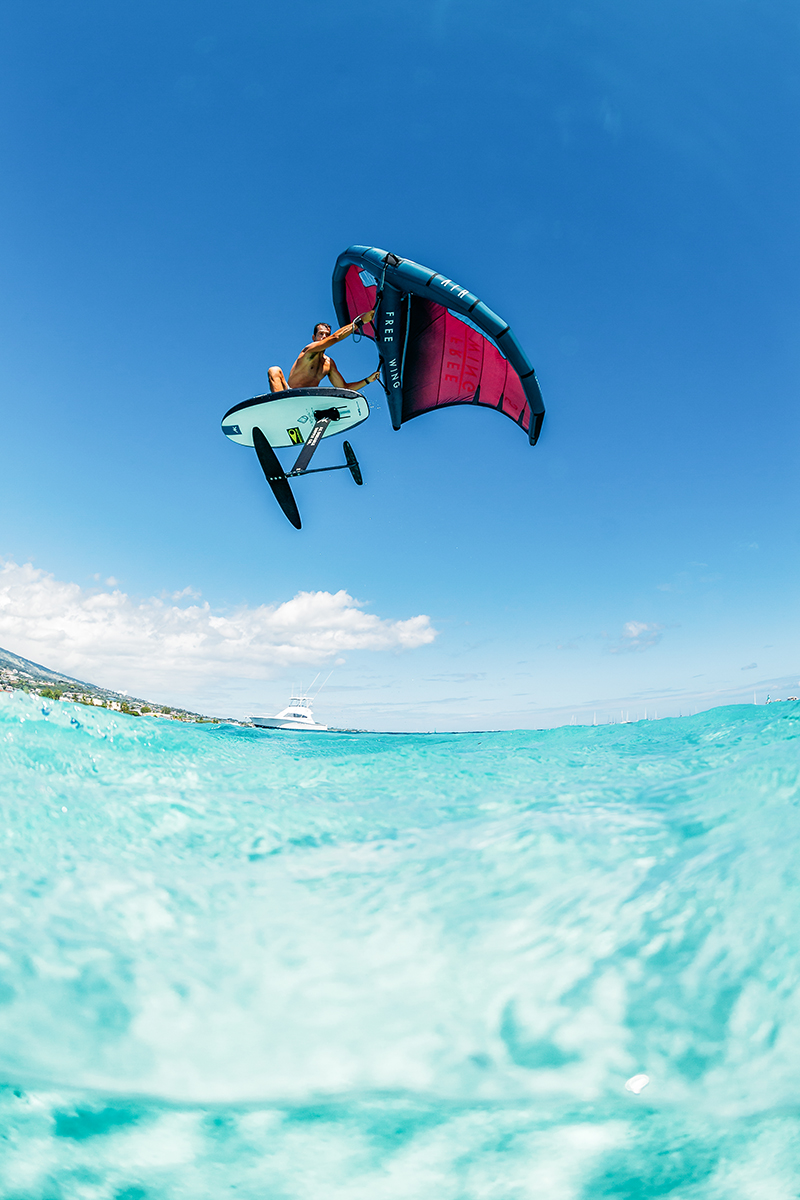
You’ve added quite a bit of curvature to the strut this year, how does this improve the wing?
This curvature gives some separation between the front and back, and gives the wing a fantastic easy balance. It results in the wing sitting very nicely between the hands making it comfortable for extended time on the water. It also allows us to connect the back of the strut to the canopy, giving you an extremely direct connection to the wing and improving its responsiveness.
You’ve introduced a choice of rigid carbon handles or soft handles for this version, what do you feel the main benefits of rigid handles are?
The rigid handles offer a familiar feeling for windsurfers and kitesurfers. They give a completely fixed and therefore very direct connection to the wing. This allows riders to feel and control every minute detail of the flight of the wing as well as improving the power transfer for pumping.
How difficult was it to engineer a solid connection between a pre-preg carbon handle and inflatable surface?
We have managed to integrate a custom molded part into the inflatable surface of the wings using the vast expertise from our SUP team. This was by no means an easy feat, but with a very intense testing program, we were able to sufficiently reinforce and protect the inflatable bladders underneath and thus able to obtain a very clean looking finish with only a small plastic part extruding. This plastic part is what the handles are mounted to directly and its integration into the wind provides maximum energy transfer.
You’ve introduced a lot more pre-loaded canopy tension into the canopy than the previous model, tell us how this helps improve the ride?
We have found this has had a massive improvement on the wave and freestyle performance of the wing which our team riders love, whilst still maintaining excellent low-end performance, really giving the wing that all-round excellence. However, I believe the most significant benefit for most users that the pre-loaded canopy tension will provide is the wonderful stability and lift the wing carries through maneuvers when the wing is moved overhead. It makes foiling tacks a dream, as the wing works with you through the turn, lifting up to give you space to focus on the maneuver rather than getting in the way and you having to fight it round. We really believe the intermediate user will see massive benefit from this when they are learning tacks as they can prove to be a tricky maneuver.
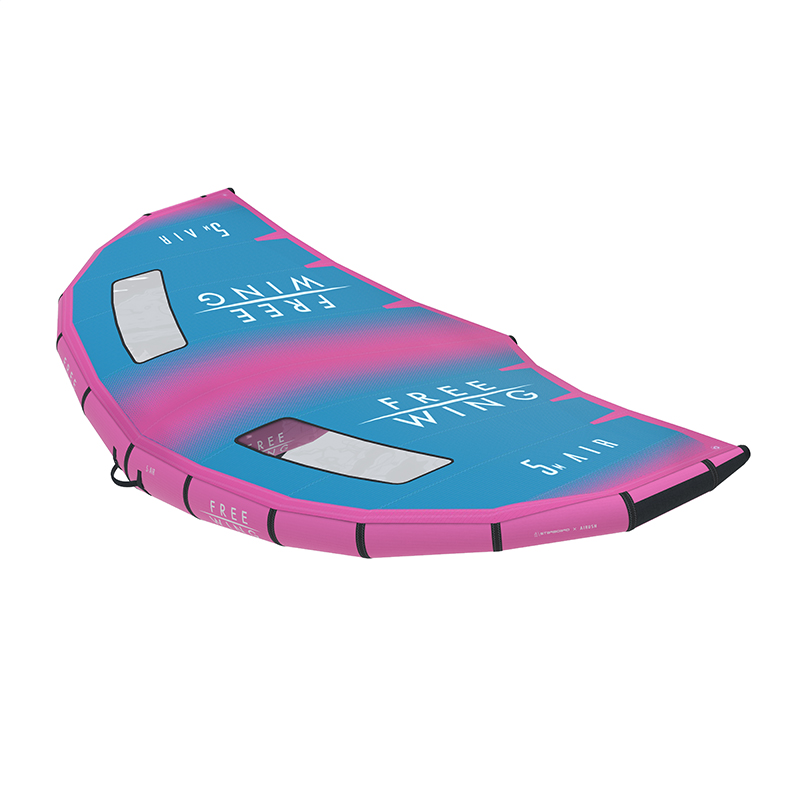
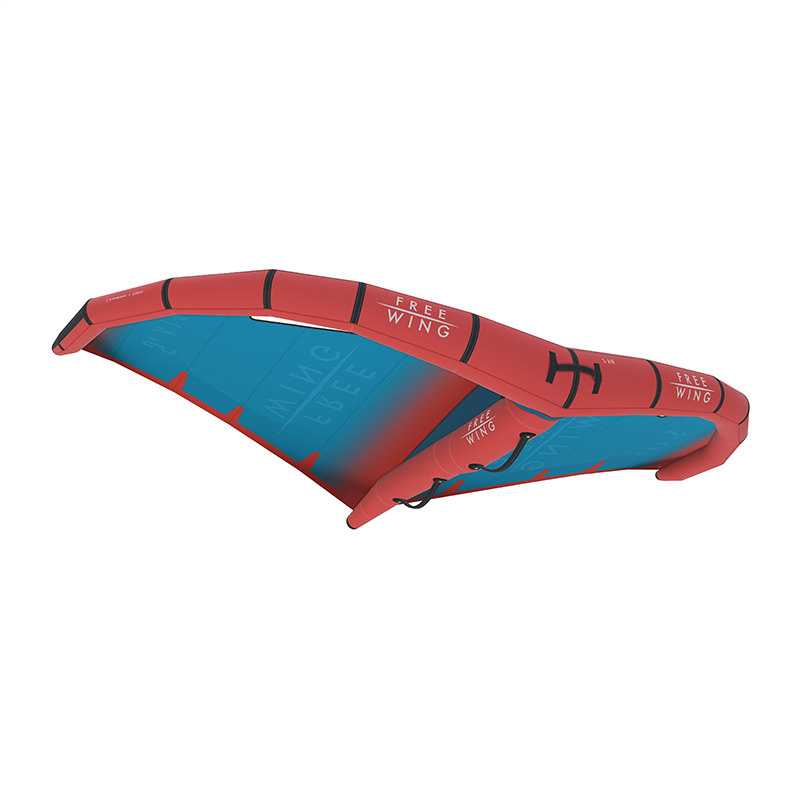
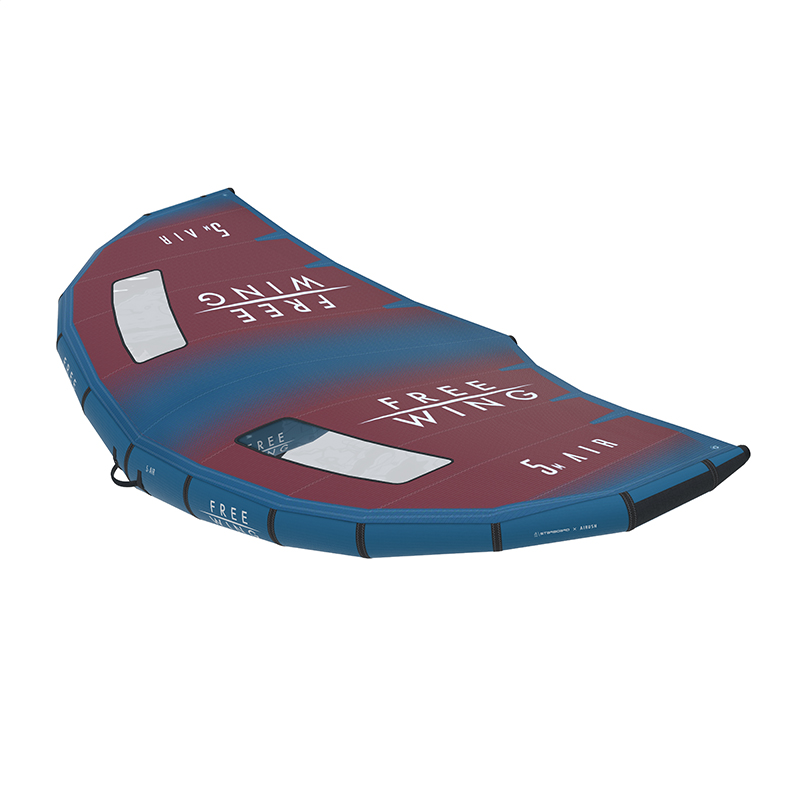
You’ve developed a huge range of sizes from 2.5m through to 7m, all tailored differently to their wind speeds. Which are the most difficult sizes to develop and why?
Quite honestly the very small sizes proved most tricky to develop. Being based in Thailand, we were able to get a lot of time on the sizes 5-7m and then the European summer gave us good time on the 4-5m. But for those lower three sizes, the 2.5m, 3m and 3.5m, not only do you need a serious amount of wind to be using them but often this results in riding in extremely gusty conditions, making the analysis of the wing performance hard. We also need to think of who will actually be using those sizes – the 2.5m for example is mostly going to be used by kids and lighter women, so it is important to make sure we receive their feedback on it rather than that of an 80kg male team rider, who is only going to use it if it’s 45 knots…
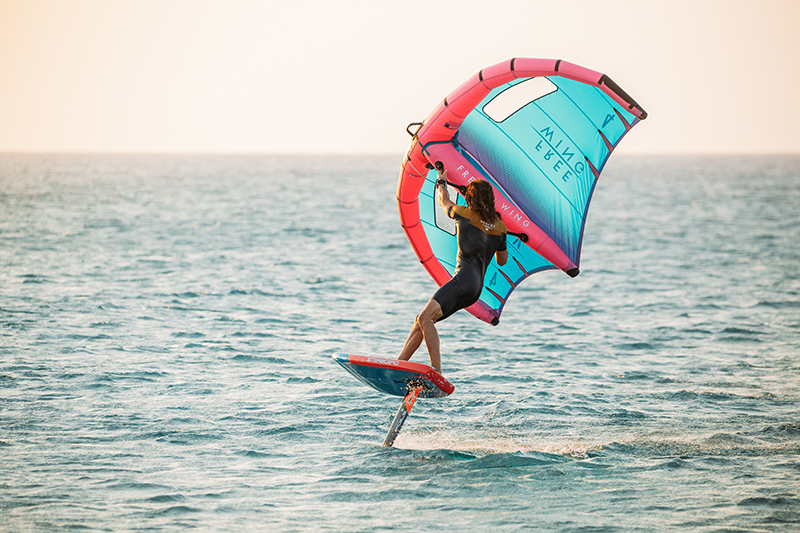
We know Starboard and Airush work collaboratively developing the FreeWing – who’s been the lead developer for this model, and where has the testing been carried out?
Quite honestly, this model has been a collaborative effort from everyone at Starboard and Airush. It’s such an important product for us and we have really worked to utilize all aspects of the group to ensure the product is the best it can be. Just using the handle, for example, we have drawn on expertise from our inflatable SUP department for integration knowledge as well as the SUP paddles department in order to obtain the lightest carbon on the market and our team within Airush and AK for their expertise on injection molded parts.
The testing again has been a group wide effort, with the team in SUP and windsurf in Thailand doing a lot of testing on the 6 and 7m, the Airush and AK team in Cape Town testing the 3.5-4m. The FreeWing dream team riders in Europe did a lot of testing on the key 4.5-5.5m sizes and the riders over in the US tested the 2.5 to 3.5m sizes in some gnarly Hood River sessions. I have been fortunate enough to be overseeing the development process for the wing, traveling to each test and drawing conclusions to improve the design from the feedback of the guys testing, but really it is a collaborative effort from all involved.
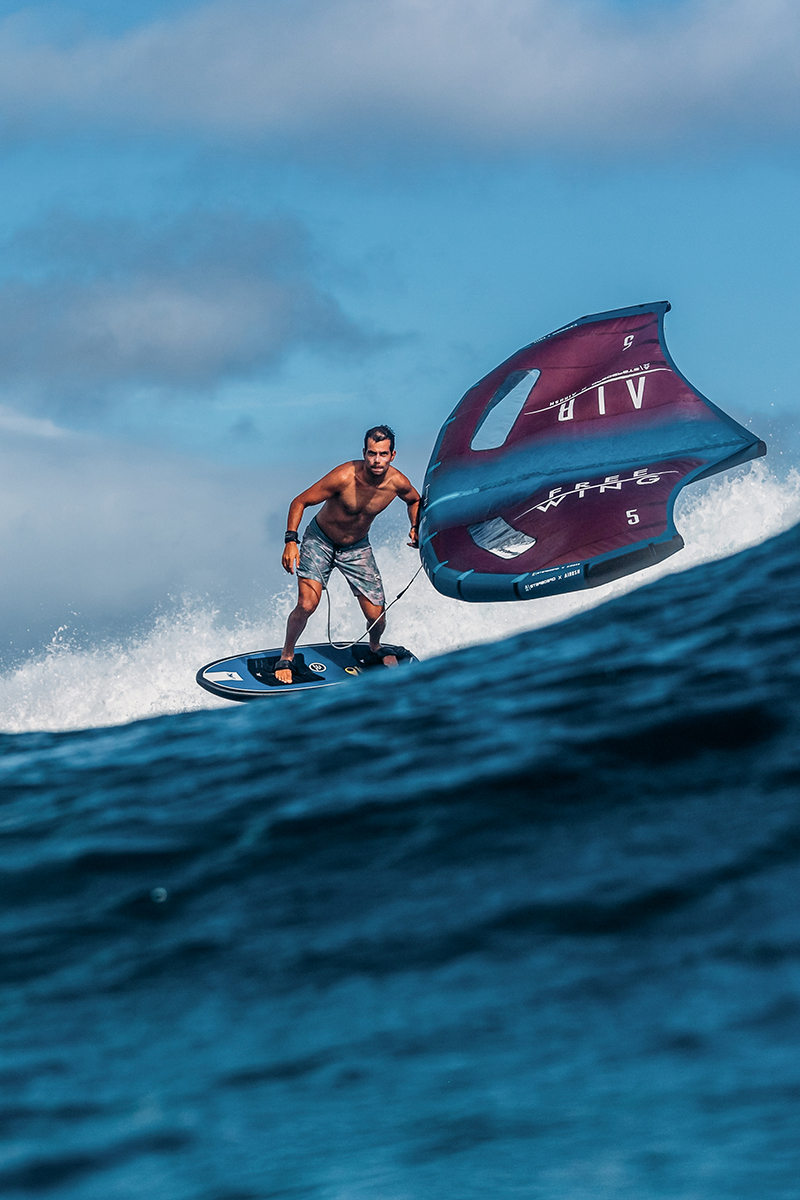
New wing, board and brand new foil releases from Eleveight enter into their 2025 range...
READ MOREBrian Grubb's a legend both on and off the water. Lift have further recognized this, by bringing out their own Grubb signature range, tailored to his style.
READ MOREDuotone just dropped a bunch more 2025 gear, featuring new wings, foils and masts.
READ MORE